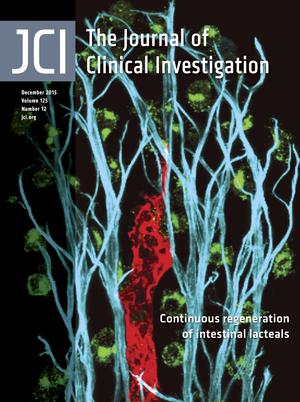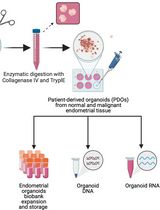- EN - English
- CN - 中文
Intracaecal Orthotopic Colorectal Cancer Xenograft Mouse Model
脑内原位结直肠癌异种移植小鼠模型
发布: 2017年06月05日第7卷第11期 DOI: 10.21769/BioProtoc.2311 浏览次数: 13959
评审: Jia Liilgen MenderAmriti Rajender LullaAna Santos Almeida
Abstract
The host microenvironment plays a prominent role in tumor growth, angiogenesis, invasion, metastasis, and response to therapy. Orthotopic tumor model mimics the natural environment of tumor development and provides an effective approach to investigate tumor pathophysiology and develop therapeutic strategies. This protocol describes the technique involving injection of colorectal cancer cell suspension into the intestinal wall of mice to establish an orthotopic colorectal tumor model.
Keywords: Colorectal cancer (结直肠癌)Background
Various murine models have been developed to facilitate studies of human cancers and allow better understanding of mechanisms contributing to tumor growth. While heterotopic xenograft models involve implanting cancer cells into the flank of immunocompromised mouse subcutaneously, orthotopic tumor models more closely resemble the original tumor development due to the implantation of tumor cells directly into the organ of origin (Richmond and Su, 2008). Although orthotopic xenograft models are technically challenging and labor-intensive, orthotopic transplants are able to more accurately mimic human tumor and better predict a patient’s response to chemotherapy in comparison with heterotopic transplants because of the effects of tumor microenvironment (Talmadge et al., 2007). With increased knowledge regarding the important role of tumor-host cell interaction during tumor progression, genetically engineered mouse (GEM) models using immunocompetent mice extend our ability to model the complexity of human cancers (Gopinathan and Tuveson, 2008; Zitvogel et al., 2016). However, GEM models are more expensive, often require months to a year to develop tumors, and have the drawbacks regarding the heterogeneity of tumor frequency, latency and growth. By contrast, xenografts are less expensive, require less time to establish tumors, and have better reproducibility (Vandamme, 2014). In this protocol, we describe the procedure of generating orthotopic colorectal cancer by injecting human cancer cells into immunocompromised mice (Tseng et al., 2007; Liao et al., 2015).
Materials and Reagents
- 27 G x 5/8 syringes (BD, catalog number: 329412 )
- 0.5-μm membrane filter (EMD Millipore, catalog number: FHLC04700 )
- 6-8-week old female NU/J nude mice (THE JACKSON LABORATORY, catalog number: 007850 ) or CB17 severe combined immunodeficient (SCID) mice (Charles River, Quebec, Canada)
- Phosphate-buffered saline (PBS), sterile (Corning, catalog number: 21-040 )
- Buprenorphine SR-LAB (Zoopharm, Windsor, CO)
- Betadine
- 70% alcohol
- Ophthalmic ointment
- 0.9% sodium chloride irrigation (Hospira, catalog number: 0409-6138-22 )
- 2,2,2-Tribromoethanol (Sigma-Aldrich, catalog number: T48402 )
- 2-methyl-2-butanol (Sigma-Aldrich, catalog number: 152463 )
- Avertin working solution or ketamine/xylazine/acepromazine (see Recipes)
Equipment
- Forceps (sterilize before use) (Fine Science Tools, catalog number: 11006-12 )
- Surgical scissors (sterilize before use) (Fine Science Tools, catalog number: 91402-12 )
- Reflex wound closure clip applier (Fine Science Tools, catalog number: 12020-09 )
- Reflex wound closure clips (Fine Science Tools, catalog number: 12022-09 )
- Reflex wound clip remover (Fine Science Tools, catalog number: 12023-00 )
- Heat lamp (Morganville Scientific, catalog number: HL0100 )
- BETADINE® Solution Swab Aid® Antiseptic pads (Moore medical, catalog number: 90697 )
- Virkon® disinfectant cleaner (Sigma-Aldrich, catalog number: Z692158 )
- Trimmer/clipper (Wahl Clipper, catalog number: 8685 )
Procedure
文章信息
版权信息
© 2017 The Authors; exclusive licensee Bio-protocol LLC.
如何引用
Liao, H. and Hung, M. (2017). Intracaecal Orthotopic Colorectal Cancer Xenograft Mouse Model. Bio-protocol 7(11): e2311. DOI: 10.21769/BioProtoc.2311.
分类
癌症生物学 > 通用技术 > 动物模型 > 细胞侵袭
细胞生物学 > 细胞移植 > 同种异体移植
您对这篇实验方法有问题吗?
在此处发布您的问题,我们将邀请本文作者来回答。同时,我们会将您的问题发布到Bio-protocol Exchange,以便寻求社区成员的帮助。
提问指南
+ 问题描述
写下详细的问题描述,包括所有有助于他人回答您问题的信息(例如实验过程、条件和相关图像等)。
Share
Bluesky
X
Copy link











